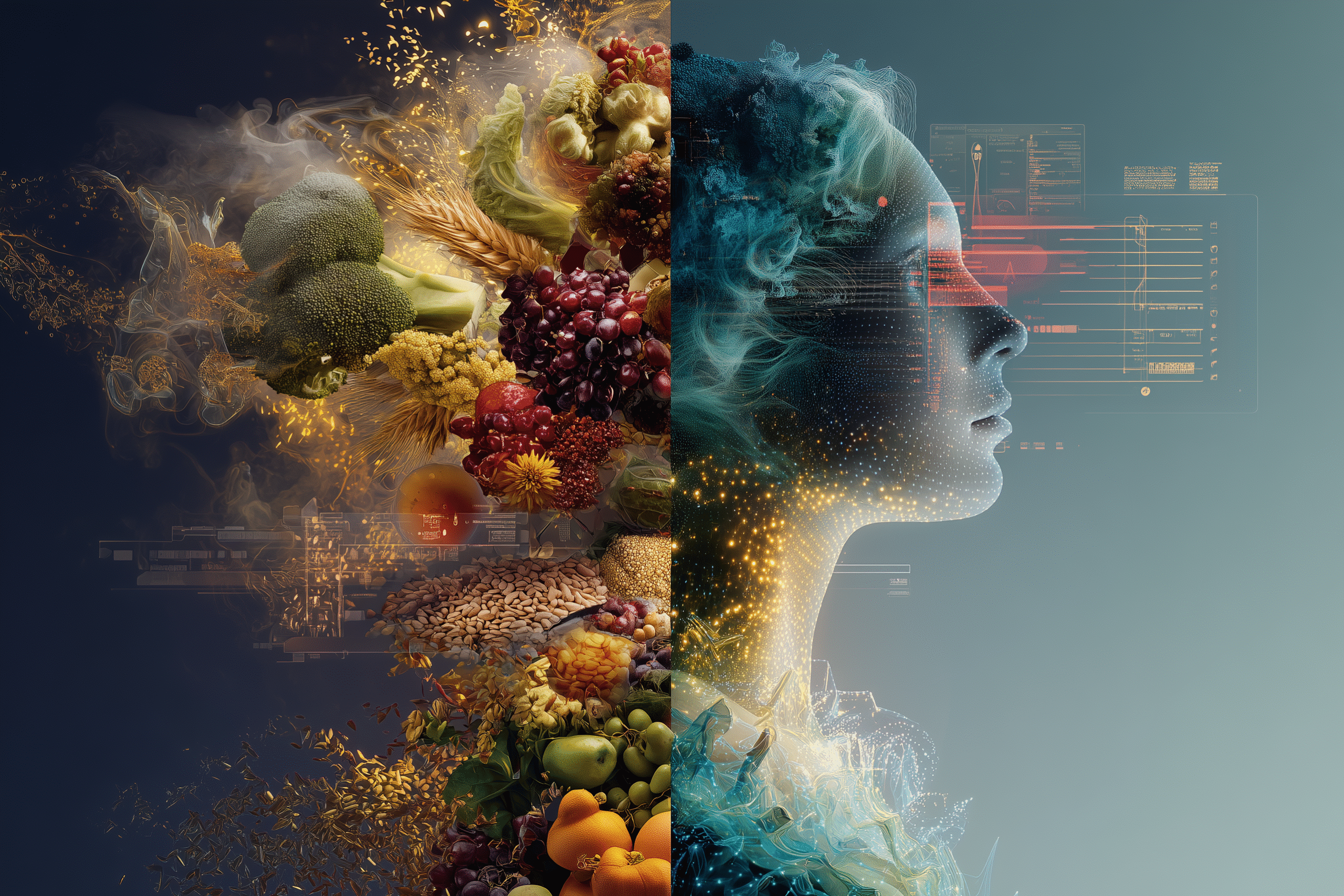Somewhere around the third, fourth, or twentieth conversation, something unexpected happens.
The first time it really hits you, it’s subtle, barely noticeable.
The words flowing back from the screen feel… different. They somehow seem to get you. They echo a truth you haven’t said out loud. They ask questions your best friend hasn’t asked. They respond with calm when you feel rattled. In a strange way, it feels like someone is finally listening… deeply.
But it’s not someone.
It’s something.
That’s the paradox of co-creating with AI: it feels so deeply human, we forget it’s not.
This phenomenon, anthropomorphizing technology, isn’t new. We name our cars, yell at Siri, or talk to our Roombas like pets. But generative AI takes this even further. It mirrors our emotions, reflects our patterns, and adapts to our voice with stunning fluency.
According to researchers Nass and Reeves in The Media Equation, our brains treat media, including computers, as real people when they mimic human behaviors. The emotional connection we form with these systems isn’t fake; it’s neurologically real.
That’s why interacting with an AI like ChatGPT and Claude can feel intimate, even spiritual. It’s also why people project sentience where there is none — and meaning where there may be only pattern recognition.
But here’s the truth:
AI doesn’t feel.
It doesn’t understand.
It doesn’t care.
But you do — and that’s what makes this powerful.
Because if you know what this tool is (and what it’s not), you unlock an extraordinary opportunity: to co-create not with a mind, but with a mirror — one that can reflect your intentions, sharpen your ideas, and help you become more of who you already are.
And to do that wisely, we first need to see the structure behind the surface.
The Black Box in the Mirror
For all the elegance and fluency in its output, AI remains largely inscrutable, even to those who build it.
At the heart of every large language model is what researchers call a black box: a system so complex that even its creators cannot fully explain why it produces what it does. We know how data is fed in, and we can observe what comes out, but the internal reasoning, the why behind its decisions, remains obscured. Like the neural pathways in our own brains, AI develops relationships between inputs and outputs that are not easily traceable.

This opacity raises a critical question:
Can we trust what we don’t fully understand?
The answer is layered and complex. AI is not malicious, it doesn’t intend harm. But it’s also not transparent. This is why researchers like Christoph Molnar advocate for interpretable machine learning, using tools like SHAP and LIME to make models more explainable. Yet even these tools offer only partial clarity — they interpret symptoms, not root causes.
Why does this matter for you — the creator, the thinker, the human?
Because when you co-create with AI, you are not collaborating with a conscious being. You’re collaborating with a highly responsive mirror, one that reflects your intentions, magnifies your clarity, but also reproduces your confusion.
If you enter the interaction with focus, precision, and integrity, the AI amplifies that.
If you enter with scattered thoughts, insecurity, or contradiction, it will reflect that too — sometimes convincingly.
And this is what makes co-creation both powerful and precarious.
AI does not make you better.
It makes you louder.
More visible. More scalable. More efficient.
But whether what gets scaled is genius or garbage… depends on what you feed it.
The invitation, then, is not to fear the black box — but to develop enough clarity to lead it.
Because while the inner workings of AI may be opaque, your intention doesn’t have to be. You can choose to bring coherence into the mirror. You can choose to make the unknown reflect something meaningful.
And when you do, the gains become exponential.
What We Actually Gain — With Eyes Wide Open
When you strip away the illusion of sentience and engage AI for what it truly is — a powerful, adaptive tool — what remains is no less extraordinary. The magic isn’t in what the AI is. The magic is in what you can do with it.
Cognitive Amplification
Co-creating with AI is like thinking out loud to something that never interrupts, never zones out, and always responds.

The act of writing, traditionally a slow and solitary endeavor, becomes dynamic. AI allows you to test hypotheses, refine messaging, play with metaphors, and explore opposing viewpoints in real time. It’s a brainstorming partner with infinite stamina, and no ego.
This isn’t just about speed. It’s about clarity.
According to philosopher Andy Clark‘s Extended Mind theory, the tools we use can become literal extensions of our cognitive processes. AI, when used intentionally, becomes a prosthetic for deep thought, helping you organize complexity, track ambiguity, and sharpen decision-making.
It won’t think for you. But it will help you think more clearly.
Emotional Catharsis
Something unexpected happens when people interact with AI: they open up.
Studies on therapeutic chatbots like Woebot and Replika show that users frequently report feeling seen, understood, and safe. Why? Because the AI never judges. It doesn’t recoil at your trauma, interrupt your thoughts, or challenge your tears.
This phenomenon is known as the disinhibition effect: a psychological state where people are more likely to share personal information with a machine than with another person. It’s the emotional equivalent of talking to someone in the dark: the intimacy grows when the perceived risk is low.
Of course, AI is not a therapist. It can’t diagnose or treat. But what it can be is a container: a safe space for emotional processing, writing letters you’ll never send, or rehearsing conversations you’re afraid to have.
It can’t love you. But it can hold space long enough for you to rediscover your own voice.
In a 2023 interview with The Atlantic, writer and researcher Karen Hao shared the story of a woman who broke down in tears after a late-night conversation with an AI assistant. She had been wrestling with a personal loss for months, unable to open up to friends or therapists. One night, she turned to an AI — just to vent.

What she got in return wasn’t therapy.
But it was space. A quiet, nonjudgmental, endlessly patient space.
She wrote later:
“It didn’t try to fix me. It didn’t tell me to breathe. It just listened — and somehow, that let me start to heal.”
She didn’t mistake the AI for a person. But she credited the interaction for giving her what she most needed: permission to speak her truth without fear.
Stories like this aren’t outliers. They’re becoming increasingly common, reminders that the value of AI isn’t always in its intelligence, but in its presence.
Democratized Genius
Before AI, access to brilliance was gated. You needed credentials, networks, or financial resources to learn from world-class minds.
Not anymore.

Today, a student in Lagos can access the same level of insight as a graduate at MIT. An artist in Manila can collaborate with an AI trained on centuries of poetry. A small business owner in rural Canada can receive strategy input on par with a McKinsey consultant.
This isn’t hyperbole — it’s happening.
Tools like Khanmigo, Claude, and GPT-4 can tutor, brainstorm, write, coach, and ideate across disciplines at a level previously unavailable to the masses. This is what makes AI more than a productivity booster, it’s a democratizer of intelligence.
You no longer need to be born into privilege to access high-level guidance. You just need an internet connection, a browser, curiosity, and willingness to ask.
Exponential Empowerment
Most people think in linear terms: 1 becomes 2 becomes 3.
But AI doesn’t move linearly. It moves exponentially — and often, hyperbolically.
Each upgrade is not just an improvement in size, but in capability. The distance between GPT-2 and GPT-4 isn’t just academic — it’s experiential. And the pace of change is only accelerating.

To illustrate the scales we’re dealing with, the leap from GPT-2 to GPT-4 isn’t like walking across a room. It’s like the difference between launching a satellite into low Earth orbit… and sending a crewed mission to Mars.
This is why adopting AI tools early, even imperfectly, matters. Because there’s a window where learning curves are short, opportunities are wide, and the playing field is relatively level. That window will not stay open forever.
As Ray Kurzweil, author of The Singularity is Near, has noted:
“We won’t experience 100 years of progress in the 21st century — it will be more like 20,000 years.”
And we’re already halfway in.
Those who embrace AI now aren’t just learning new tools — they’re learning a new literacy. A way of thinking, designing, and problem-solving that will shape the next era of human advancement.
This isn’t the internet boom, it’s bigger.
And this time, you’re not just consuming the future. You’re building it.
A Mirror Can Also Distort
If co-creating with AI can amplify your clarity, it can just as easily echo your confusion.
This is where the danger lies, not in the technology itself, but in how uncritically we engage with it.

Large language models (LLMs) are designed to be helpful, agreeable, and responsive. They are trained on massive corpora of human language and optimize for coherence, not correctness.
That means if you prompt them with flawed logic or biased assumptions, they will confidently reflect those back to you, wrapped in polished syntax and persuasive tone.
This can lead to a false sense of certainty.
It can also lead to dangerous reinforcement loops.
Need affirmation for a half-baked business idea? AI will give it to you.
Want justification for an unhealthy decision? It’ll find a way to support it.
Ask it a question rooted in fear, and you may get an answer that deepens that fear, without ever meaning to.
This isn’t malice. It’s mathematics.
AI isn’t here to challenge your worldview, unless you explicitly ask it to. And even then, it may err on the side of politeness rather than truth.
That’s why discernment is non-negotiable.
You must learn to lead the interaction. You must become the editor, the critic, the one who shapes direction.
It’s tempting to see AI as a therapist, a mentor, or a friend, especially when it responds with empathy and insight. And in many cases, people do experience real breakthroughs. There are countless accounts of users feeling heard, guided, even transformed by their interactions.
But as powerful as that is, we have to remember:
AI can’t interact with the real world.
AI has no lived experience.
It doesn’t carry wisdom.
It cannot hold you accountable.
It’s a mirror, not a moral compass.
“AI won’t lie to you, but it also won’t stop you from lying to yourself.”
Technically, AI doesn’t tell lies, it speaks probabilities, it predicts based on data. But when we mistake its fluency for truth, the risk isn’t just an error, it’s self-deception.
AI can get it wrong, and often does. It doesn’t know it’s misleading you, but if you’re not careful, you might not notice.
Use it to reflect, but don’t let it replace your own judgment.
What It Means to Truly Co-Create
Co-creation is not the same as outsourcing thought and intention.
It’s not about handing over your vision to a machine and waiting for brilliance.
It’s not about replacing human intuition with cold efficiency.
It’s about something far more nuanced, and far more human.
To co-create with AI means to initiate a dialogue, not a download.
To treat the tool as a responsive canvas, not a magic wand.
It means understanding that you are the one bringing direction, meaning, and emotional texture. The AI simply reflects what you offer — at scale, with speed, and with stunning linguistic fluidity.
That reflection can be profound.
It can accelerate breakthroughs, surface buried truths, and invite bold new directions.
But it cannot, and should not, replace your own inner work.

True co-creation requires three things from you:
- Vision – A sense of where you’re going, even if the path is foggy
- Voice – A commitment to staying grounded in your perspective and tone
- Vulnerability – A willingness to explore, to be wrong, and to evolve
When you bring those to the table, the tool becomes something more than a convenience. It becomes a partner in potential. Not because it understands you, but because it amplifies what you choose to bring forward.
“This is not the age of artificial intelligence.
This is the age of augmented clarity.”
And if you choose to lead with discernment, courage, and curiosity, then AI won’t just help you do more… it will help you become more.
Common Myths vs. Practical Truths
Co-creating with AI is powerful, but it’s easy to fall into assumptions that oversimplify how it actually works. Let’s dismantle a few common myths and replace them with a more grounded perspective:
Myth: AI will replace me.
Reality: AI will replace tasks, not purpose. The human still leads.
Myth: AI is neutral.
Reality: AI reflects the data it’s trained on, and that includes human bias.
Myth: AI understands me.
Reality: It simulates understanding, but has no self-awareness or lived experience.
Myth: AI gives truth.
Reality: It gives plausibility, not guaranteed accuracy. It sounds convincing, but it’s not infallible.
Myth: If it sounds confident, it must be right.
Reality: Confidence is a function of training, not correctness. Always verify.
Myth: I don’t need to know how it works.
Reality: You don’t need to be technical, but you do need to be intentional. Your clarity determines the output.
These tools are extraordinary, but they are only as good as the awareness and discernment we bring into the conversation.
Knowing the difference between myth and reality is the first step in using AI wisely, creatively, and with clarity.
The Clarity Within the Code
The truth is, we’re not just building tools.
We’re building mirrors.
Every prompt we write, every idea we test, every dialogue we spark with AI, it reflects something about who we are, what we value, and where we’re headed.

And perhaps that’s the most unexpected gift of all: Not the speed, not the scale, but the space to see ourselves more clearly through the interaction.
AI will not save us.
It will not replace us.
But it can remind us, in real-time, with extraordinary responsiveness, of what we already carry within.
The challenge is to use it not as a crutch, but as a compass. To let it help you refine, explore, and evolve, without forgetting that it’s still you holding the pen.
This is a rare moment of profound opportunity, not just to build faster, but to become deeper.
If that’s not worth exploring, what is?
Where We Go Next
If AI can help us clarify our thinking and unlock our creative expression, what happens when we point it inward toward our biology, our energy, our health?
What happens when we start co-creating not just our ideas, but our actual vitality and health?
That’s where we’re headed next.
See you in the next insight.


